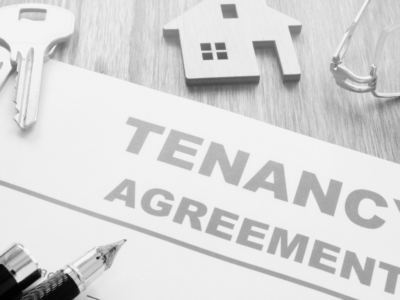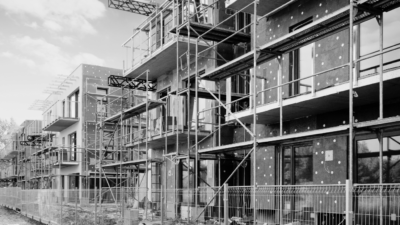The way we build our homes and their future environmental impact once erected has become a primary concern for the construction industry as countries worldwide set out to hit ‘net-zero’ targets.
Last year’s COP26 shone a light on the target’s governments, businesses, and individuals will need to commit to and meet in order to avoid the most devastating effects of climate change.
For the construction industry, much of this was highlighted during the Cities, Regions and Built Environment Day of the conference aimed to advance action in the places we live.
It was no surprise that an entire day was dedicated to the built environment, with the sector accounting for nearly 40% of global energy and process-related emissions, with major contributors including the manufacturing of building materials and the heating, cooling, and lighting of buildings and infrastructure.
Often, building equipment relies on fossil fuels, meanwhile the production of non-sustainable materials and transportation increases emissions.
With all this in mind, as the UK scrambles to build new homes in an effort to tackle the housing crisis, construction companies must strive to construct homes in a way that isn’t detrimental to the environment.
Barriers to greener construction
Despite a clear social responsibility among all sectors to move to more sustainable practices, the pace of change in construction isn’t fast enough, almost certainly due to perceived barriers to ‘going green’.
Building sustainably begins at the planning stage, yet this is also where the first obstacles are met.
Firstly, it can be difficult to build new relationships with sustainable suppliers.
This is a problem because relationships build between construction companies and suppliers are essential for establishing mutually beneficial processes and friendlier costing rates.
At the same time, a lack of experience in sustainable construction among the workforce acts as a barrier.
This has seen improvements, with the Global Green Skills Report 2022 finding that green talent in the workforce across sectors has increased by 38.5% since 2015.
However, the demand still far exceeds this, which causes delays in the adoption of sustainable projects as the industry tries to catch up by upskilling workers.
As such, investing in training courses to upskill and reskill the workforce is critical.
A carbon-neutral industry will require everyone in all roles, from contractors and project managers to design engineers and architects, to work together with a shared awareness of sustainable literacy. So, every training course should aim to move to ‘net-zero’.
Developers are also cautious of time and financial costs during the construction stage.
Figures state that about 40% of UK businesses said cost was the biggest issue in implementing sustainable practices.
Upfront costs of ‘going green’ through new and more intricate processes effect the sustainable commitments from management in an effort to avoid what is perceived as a lengthy and costly project.
Clearly then, the industry must come together on several fronts to remove barriers that are preventing advancements in greener construction.
A key component in achieving this will be amplifying the incentives available.
Consumer and legislative demands
Consumer demand is certainly there. Homebuyers’ priorities are shifting towards greener properties driven by practical motivations and a desire to adopt a more sustainable lifestyle with some even prepared to pay higher prices.
Recent fuel price hikes will only consolidate this as potential buyers look for a way to escape increasing financial strains with more energy efficient homes.
This has also become a major consideration for many that have continued to work from home.
In fact, a recent research survey commissioned by FJP Investment revealed three quarters (74%) of potential buyers are attracted towards the greater energy efficiency that new-build properties afford.
Meanwhile, transitioning to sustainable construction ensures that companies stay ahead of rapidly changing legislation regarding sustainability metrics.
Keeping up with new developments will help developers not only match homebuyers’ demands, but also fall in line with construction policy with relative ease and cost.
One such example can be taken from the recent Spring Statement, in which Chancellor Rishi Sunak announced that VAT on home insulation, solar panels and heat pumps will be reduced from 5% to zero for the next five years.
The policy will make it cheaper for homeowners in England, Wales and Scotland to make properties more energy efficient which will, in turn, drive down energy bills and help support retrofitting work for the construction sector.
Universal sustainable construction will not happen overnight, but it is vital that the industry sets about deconstructing the barriers preventing moves towards net-zero.
Establishing a common goal between developers and suppliers, opting for sustainable practices and materials, and addressing the green skills gap will propel companies towards high environmental standards while reaping the financial gains.





















Comments